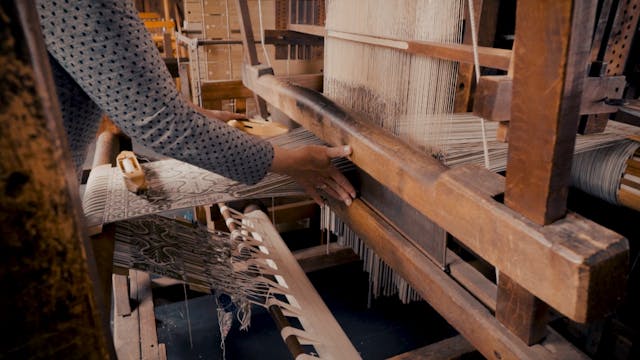Behind the Scenes Conservation of Our Circa 1900 Tiffany Floor Lamp
Design and Making
•
2m 7s
In preparing for the "Louis Comfort Tiffany: Treasures from the Driehaus Collection" exhibit, The Henry Ford’s curatorial department expressed interest in displaying a Tiffany Studios early floor lamp, circa 1900, from the collections. This lamp features a telescopic shaft and a dual wick kerosene burner for extra illumination.
In Tiffany publications, the lamp rests on an outer cushion-textured base with six ball-shaped feet. However, the outer base from The Henry Ford’s lamp was missing, with no previous record of its existence when it entered the collection in 1966.
We embarked upon an effort to locate a similar base in museums or private collections to serve as a reference or pattern, to inform the creation of a replacement base—only to discover that the lamp is quite rare. Ultimately, the base was printed with the help and generosity of the additive manufacturing team at the Ford Advanced Manufacturing Center.
Next, came the process of paint-matching. Achieving a finish that matched the original metal lamp required the application of several layers of paint. The colors were mixed into several formulations to closely match the patina (aged finish) of the lamp.
Up Next in Design and Making
-
Recreation of an 1800s Historic Ice S...
Watch as The Henry Ford's team of talented Clothing and Textile Experts recreate a historic 1800's ice skaters dress from our archives. Meet the artists and see how the details come back to life as history moves from the archive to the skating rink.
-
How an 1803 Jacquard Loom Led to Comp...
Joseph Marie-Jacquard developed the mechanical Jacquard loom in France in 1803. This innovative machine used punch cards to control the design of textiles made on the loom. These cards are predecessors to the modern-day computer punch cards and computer technology.
-
Alexander Girard: Mid 20th-Century Mo...
Alexander Girard, renowned mid-20th century architect and designer, used color and pattern joyfully and unselfconsciously in an era of muted minimalism. As the head of Herman Miller’s textile division from 1952 until 1973, he designed over 300 textiles – many which feature surprising color combin...


